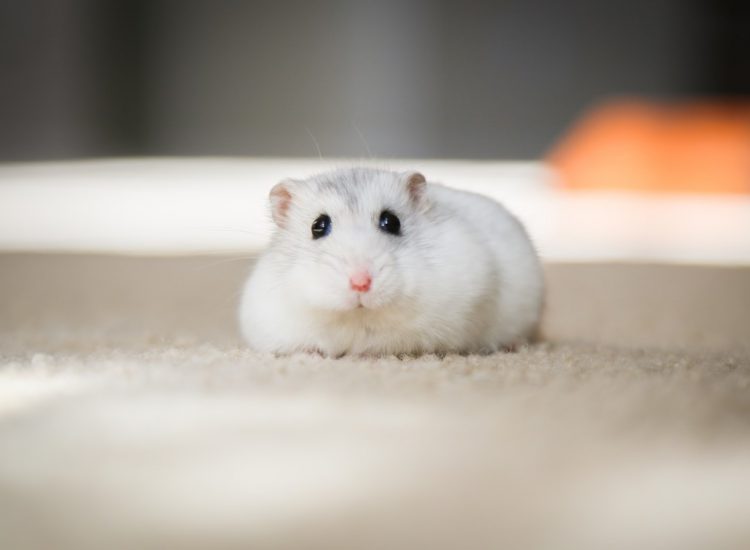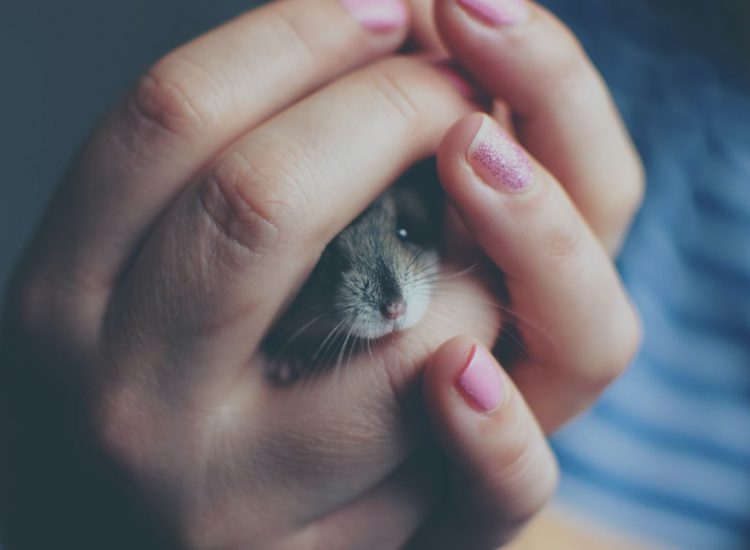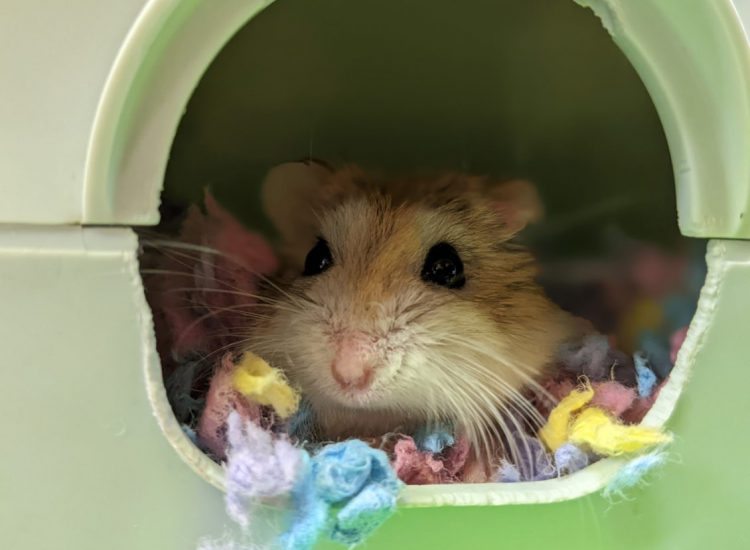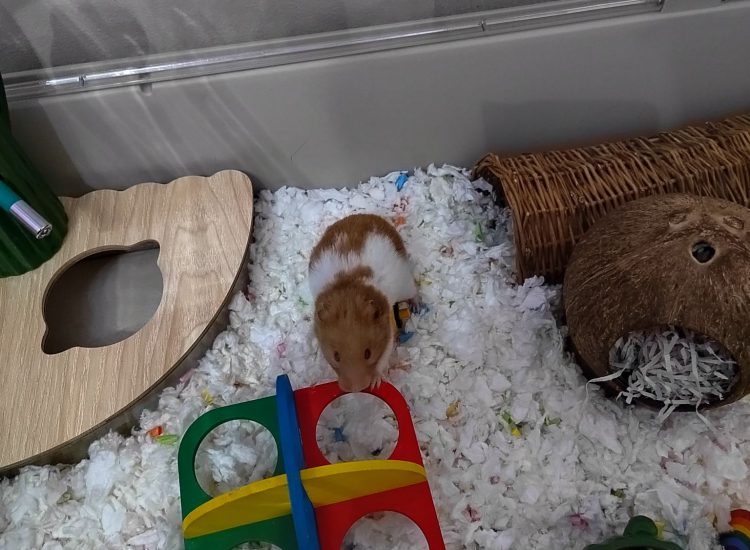The receptor binding and Pseudovirus entry of BA.2, BA.2.12.1, BA.2.75, and BA.4/5
In contrast with the SARS-CoV-2 PT, there are 31, 33, 37, and 34 amino acid (AA) mutations within the S protein of BA.2, BA.2.12.1, BA.2.75, and BA.4/5, respectively (Supplementary Fig. 1). Notably, the S protein of some early strains of BA.4/5 harbors N658S substitution (Supplementary Fig. 1)23. In contrast with BA.2, BA.2.12.1 has further L452Q and S704L substitutions within the S protein, whereas BA.4/5 has further △69H-70V, L452R and F486V mutations (Supplementary Fig. 1). As for BA.2.75, there are extra distinct substitutions, together with K147E, W152R, F157L, I210V, G257S, G339H, G446S, and N460K (Supplementary Fig. 1). Furthermore, the residue 493 within the BA.4/5 and BA.2.75 S proteins was reversely mutated to Q from R (Supplementary Fig. 1).
Because the look of the Omicron variant, a number of Omicron sub-variants emerged, amongst which Omicron BA.1 was the predominant pandemic pressure initially, and the next BA.1.1 was quickly changed by BA.2 (Fig. 1a). Sequentially, BA.2.12.1 emerged and expanded considerably (Fig. 1a) and BA.5 turned the predominant pandemic pressure not too long ago (Fig. 1a).
Fig. 1: Prevalence and receptor binding traits of SARS-CoV-2 Omicron sub-variants. a Frequencies of BA.2 BA.2.12.1, BA.2.75, BA.4, BA.5 and different 5 Omicron sub-variants deposited within the World Initiative on Sharing All Influenza Knowledge (GISAID) by time as indicated. b The SPR curves for the prototype (PT), BA.2, BA.2.75, BA.2.12.1, and BA.4/5 RBDs binding to hACE2. Uncooked and fitted curves are represented by black and pink strains, respectively. Okay D values proven are the imply ± customary deviations (SD) of three unbiased experiments. c The vary of binding affinities between hACE2 and RBD, antibody and RBD, or TCR and pMHC. The binding affinities between hACE2 and RBD from the PT or totally different SARS-CoV-2 variants, collected from beforehand reported results21,28,31 and this examine, have been proven as circles with indicated colours (n = 16). The binding affinity knowledge between antibody and RBD (n = 180), or TCR and pMHC (n = 249), which have been respectively derived from COVIC-DB (https://covicdb.lji.org/) and ATLAS (http://atlas.wenglab.org/net/index.php), have been additionally statistically analyzed, and every circle represented one antibody-RBD or TCR-pMHC binding affinity worth. Perpendicular orange strains and inexperienced triangles current medians and means, respectively. The boundaries of the field in every boxplot are the twenty fifth (Q1) and seventy fifth (Q3) percentiles of the dataset; the minima of every field plot is the minimal within the dataset that’s bigger than or equal to Q1 − 1.5 * the interquartile vary (IQR), whose worth is the same as Q3 – Q1; the maxima is the utmost within the dataset that’s lower than or equal to Q3 + 1.5 * IQR; the decrease whisker is the distinction between Q1 and the minimal, and the higher whisker is the distinction between the utmost and Q3. d Pseudovirus entry assay for the PT, D614G and Omicron sub-variants. Pseudoviruses for the PT and variants have been respectively diluted to an equal quantity, and every pseudovirus was added to the wells (n = 6) containing Vero cells. After the 15 h incubation, the fluorescent cells for every nicely have been counted utilizing a CQ1 confocal picture cytometer (Yokogawa). Infectivity for D614G and every Omicron sub-variant was normalized on the foundation of the PT, and the relative an infection fold was proven because the y-axis. Knowledge have been offered as imply values ± SD. Two unbiased experiments have been carried out with related outcomes. Supply knowledge are offered as a Supply Knowledge file. Full dimension picture
The binding affinities between hACE2 and RBDs from the 5 Omicron sub-variants (BA.2, BA.2.12.1, BA.2.75, and BA.4 and BA.5) have been analyzed by a floor plasmon resonance (SPR) assay (Supplementary Desk 1). The affinity of the PT RBD to hACE2 was 23.8 ± 2.6 nM (Fig. 1b), per earlier reports10,21,29. The Okay D of BA.4/5 RBD binding to hACE2 was roughly 9.0 ± 1.7 nM, which is ~2.6- and ~1.6-fold greater than that of the PT (23.8 ± 2.6 nM) and BA.2 (14.6 ± 2.1 nM) RBDs, respectively (Fig. 1b), whereas BA.2.75 RBD (7.5 ± 0.2 nM) has an analogous binding capability for hACE2 to BA.4/5 (9.0 ± 1.7 nM) (Fig. 1b). Nonetheless, the binding affinity of BA.2.12.1 (27.4 ± 0.9 nM) to hACE2 was ~1.9-fold decrease than that of BA.2 (14.6 ± 2.1 nM) (Fig. 1b). Apparently, though varied SARS-CoV-2 variants harbor distinct mutations of their RBD, the binding affinities between their RBDs and hACE2 are in a slim vary from one digit to 2 digits of nanomolar, which is similar to the binding affinity between PT and hACE2 (Fig. 1c). Subsequent, we carried out a viral entry assay of Vesicular stomatitis viruses (VSV) pseudotyped by spike proteins of SARS-CoV-2 Omicron sub-variants. It confirmed that these pseudoviruses might enter the Vero cells with totally different capabilities, amongst which the BA.2.75 pseudovirus has the very best an infection effectivity, and BA.4/5 follows, whereas BA.3 pseudovirushas the bottom an infection effectivity (Fig. 1d).
The Constructions of BA.2, BA.2.12.1, BA.2.75 and BA.4/5 (N658S) S or RBD in Advanced with hACE2
To unravel the underlying molecular mechanism of the S proteins of Omicron BA.2, BA.2.12.1, BA.2.75, and BA.4/5 sure to hACE2, we decided their atomic constructions of the S (BA.2, BA.2.12.1 or BA.4/5) or RBD (BA.2.75) in advanced with hACE2 by cryo-EM or X-ray crystallography (Supplementary Figs. 2–4 and Supplementary Tables 2 and three). In advanced constructions, all S proteins of BA.2, BA.2.12.1 and BA.4/5 (N658S) exhibit a three-RBD-up conformation (Supplementary Figs. 2-4). To grasp the detailed interactions between hACE2 and these RBDs, focus refinement on RBD/hACE2 was carried out, and native maps of BA.2 RBD/hACE2, BA.2.12.1 RBD/hACE2 and BA.4/5 RBD/hACE2 have been resolved at resolutions of three.14 Å (Supplementary Figs. 2 and 5), 3.09 Å (Supplementary Figs. 3 and 5) and a couple of.66 Å (Supplementary Figs. 4, 5), respectively. The crystal construction of BA.2.75 RBD in advanced with hACE2 was decided at a decision of two.9 Å (Supplementary Fig. 5).
In line with our earlier reports10,40, the binding interface between RBD and ACE2 could possibly be divided into two patches (patch 1 and patch 2). As for patch 1, these 4 omicron sub-variants present totally different interplay networks (Fig. 2a). Residue N477 of BA.2, BA.2.75 and BA.4/5 RBD kinds an H-bond with S19 of hACE2, whereas A475 engages S19 with an H-bond within the BA.2.12.1 RBD/hACE2 and BA.2.75/hACE2 complexes. N487 within the RBD of BA.2 and BA.4/5 interacts with each Q24 and Y83 of hACE2 by H-bonds, nevertheless it solely kinds an H-bond with Y83, and its interplay with Q24 was absent in advanced constructions of hACE2 and RBD of BA.2.12.1 and BA.2.75. Apparently, the facet chain of H34 adopts two various conformations within the BA.4/5 RBD/hACE2 advanced, in distinction to the opposite three complexes. H34 of hACE2 kinds an H-bond with Y453 of the BA.4/5 RBD or S494 of the BA.2.12.1 RBD. Notably, R493 of BA.2 and BA.2.12.1 kinds a salt bridge with E35 from ACE2. Whereas in BA.2.75 and BA.4/5 RBD, R493 is substituted by Q493, which is hydrogen-bonded with K31 within the BA.4/5 RBD/hACE2 advanced. Though the H-bonds have been absent between Q493 and K31 within the BA.2.75 RBD/hACE2 advanced, there are extra Van der Waals’ contacts between Q493 of BA.2.75 and K31 of hACE2 than that between R493 of BA.2 and K31 of hACE2 (Supplementary Desk 4). As well as, substitution F486V within the BA.4/5 RBD decreases its hydrophobic interactions with L79, M82, and Y83 in hACE2.
Fig. 2: The interplay evaluation of BA2, BA.2.12.1, BA.2.75 and BA.4/5 RBDs sure to hACE2. a, b Polar interactions of BA2 (yellow), BA.2.12.1(sizzling pink), BA.2.75 (purple) and BA.4/5 RBDs (orange) with hACE2 (inexperienced), which have been analyzed at a cutoff of three.5 Å. Key residues have been proven as sticks. c Electrostatic floor of Omicron BA.1, BA.1.1, BA.2, BA.2.12.1, BA.2.75, BA.3, and BA.4/5 RBDs. Residue R493 or Q493 in these RBDs was proven as sticks. Full dimension picture
Opposite to the altered interactions in patch1, the interplay community in patch 2 of those three RBDs is nearly the identical (Fig. 2b). Constantly, residues Y449, R498, T500, and G502 in these 4 RBDs kind hydrophilic interactions with D38, Y41 and K353. Nonetheless, there are nonetheless delicate variations within the interplay community in patch 2. Q42 of hACE2 kinds a further H-bond with R498 of BA.2 RBD. T500 of hACE2 is hydrogen-bonded with D355 within the RBDs from BA.2, BA.2.12.1 and BA.4/5. A further H-bond between T500 of hACE2 and R357 of the BA.2 or BA.2.12.1 RBD was additionally noticed. In contrast with the residue N501 in PT RBD, Y501 in these 4 Omicron RBDs kinds π-π stacking interplay with Y41 in hACE2, contributing to the elevated binding affinity in direction of hACE2.
In our earlier examine, T478K, Q493R, Q498R, and E484A substitutions on the receptor binding interface of Omicron BA.1 RBD might change electrostatic prices to strongly optimistic, affecting the binding between RBD and hACE221. Nonetheless, R493Q reverse mutation was noticed in BA.2.75 and BA.4/5 sub-variants, which might weaken the optimistic cost on the binding interface and will have an effect on the binding to some extent (Fig. 2c).
Mutagenesis evaluation of the important thing residues for hACE2 binding within the RBDs of BA.2, BA.2.12.1, and BA.4/5
In contrast with BA.2 RBD, BA.2.12.1 RBD solely has one distinctive mutation web site at residue 452 (L452Q), which is much from the receptor binding interface and doesn’t work together with hACE2 immediately. Nonetheless, the binding affinity between BA.2.12.1 RBD and hACE2 is barely decrease than that of BA.2 RBD (Fig. 1b), and structural evaluation additionally confirmed some variations between BA.2 RBD and BA.2.12.1 RBD in advanced with hACE2. As an example, N477 within the BA.2 RBD kinds H-bonds with hACE2, which is absent within the BA.2.12.1/hACE2 advanced (Fig. 3a and Supplementary Desk 4). In distinction, A475 and S494 within the BA.2.12.1 RBD contact hACE2 by H-bonds, which don’t exist within the BA.2/hACE2 advanced (Fig. 3a and Supplementary Desk 4). As well as, the variety of H-bonds shaped by N487, Y449 and R498 from the BA.2 RBD within the advanced is greater than that of the BA.2.12.1 RBD/hACE advanced (Fig. 3a and Supplementary Desk 4).
Related articles:
- https://altgames.xyz/the-hamster-of-love/
- https://altgames.xyz/can-hamsters-eat-cucumbers_-every-little-thing-you-want-to-know/
- https://altgames.xyz/stay-attenuated-vaccine-scpd9-elicits-superior-mucosal-and-systemic-immunity-to-sars-cov-2-variants-in-hamsters/
- https://altgames.xyz/deserted-hamster-finds-new-dwelling/
- https://altgames.xyz/4-kittens-and-hamster-deserted-in-newport/
Fig. 3: Key residues for binding the hACE2 receptor. a–c Structural comparisons between Omicron BA.2 and BA.2.12.1 RBDs, BA.2 and BA.2.75 RBDs, or BA.2 and BA.4/5 RBDs. BA.2, BA.2.12.1, BA.2.75, and BA.4/5 RBDs have been coloured similar to Fig. 2a, b. Differential residues between the 2 variants for comparability have been boxed within the dashed strains and proven as sticks of their respective colours. Key residues have been additionally offered as sticks, and people shared by two variants for comparability have been labeled in black, apart from differential residues, in any other case have been labeled with their respective colours. d The binding affinities of the BA.2, BA.4/5 and three BA.4/5 RBD mutants harboring R452L, V486F or R493Q in direction of the hACE2 receptor. Uncooked and fitted curves are represented by black and pink strains, respectively. Okay D values proven are the imply ± SD of 4 unbiased experiments. e, f The influence of substitutions F486V and R493Q on the interactions between RBD and hACE2. hACE2, BA.2 and BA.4/5 RBDs have been coloured similar to Fig. 2a, b. Supply knowledge are offered as a Supply Knowledge file. Full dimension picture
Structural comparability between BA.2.75 RBD and BA.2 RBD in particular person advanced confirmed that A475 of BA.2.75 RBD additionally kinds polar contacts with hACE2, which was not noticed within the BA.2/hACE2 advanced (Fig. 3b and Supplementary Desk 4). Nonetheless, the H-bond contributed by R493 of the BA.2 RBD was absent and was changed by Van der Waals’ contacts within the BA.2.75 RBD/hACE2 advanced (Fig. 3b and Supplementary Desk 4).
In contrast with RBD from BA.2, the RBD of BA.4/5 has three distinct mutations (L452R, F486V and R493Q) (Supplementary Fig. 1), which shows totally different binding patterns within the advanced interface (Fig. 3c). To judge the impact of those substitutions on receptor binding, we mutated these three residues from the BA.4/5 RBD to corresponding residues in BA.2 RBD one after the other and carried out the binding assay (Fig. 3d and Supplementary Desk 5). The binding affinity between BA.4/5 RBD harboring R452L mutation and hACE2 was about ~14 nM, much like that between wild-type BA.4/5 RBD and hACE2 (12.9 ± 1.8 nM) (Fig. 3d). After performing mutagenesis evaluation of the V486F for the BA.4/5 RBD, there was a 3.2-fold enhance in its binding affinity in direction of hACE2 (Fig. 3d). The structural evaluation exhibits residue F486 kinds hydrophobic contacts with L79, M82 and Y83 of the hACE2 receptor within the BA.2 RBD/hACE2 advanced (Fig. 3e), whereas V486 of the BA.4/5 RBD has a smaller sidechain than F486, leading to decreased hydrophobic interactions (Fig. 3e). The binding assay confirmed that the binding affinity for hACE2 decreased ~9.8 fold when Q493 of BA.4/5 was mutated to R493 (Fig. 3d). Within the BA.4/5 RBD/hACE2 advanced, Q493 kinds an H-bond with hACE2, as noticed in different variants carrying this mutation (Fig. 3f). Moreover, Y453, which is near Q493, kinds a further H-bond with hACE2 in BA.4/5 RBD/hACE2 advanced (Fig. 3f). Within the BA.2 RBD/hACE2 advanced, each R493 of RBD and K31 of hACE2 are positively charged, which might lower their binding, though a salt bridge was noticed between R493 of RBD and E35 of hACE2 (Fig. 3f). Altogether, R493Q substitution might enhance the binding capability in direction of hACE2.
The receptor binding spectra of omicron BA.2 and BA.4/5
Our latest work urged Omicron BA.1 has a broader-species receptor binding27. To discover whether or not the host vary of BA.2 and BA.4/5 was modified, we carried out circulation cytometry assay to guage their receptor binding capacities, during which 29 ACE2 orthologs overlaying Primates (human, monkey, grivet, chimpanzee and gorilla), Lagomorpha (rabbit), Rodentia (mouse, rat, guinea pig and golden hamster), Pholidota (Malayan pangolin), Perissodactyla (horse), Carnivora (cat, canine, fox, civet, and mink), Artiodactyla (goat, sheep, pig, alpaca, bovine and camel), Chiroptera (little brown bat, fulvous fruit bat, larger horseshoe bat, Chinese language horseshoe bat and least horseshoe bat) and Afrotheria (lesser hedgehog tenrec) have been measured (Supplementary Fig. 6).
Move cytometry assay confirmed that BA.2 RBD has an analogous receptor binding spectra to BA.1. Notably, the cells transfected with full-length ACE2 from the rabbit, rat, golden hamster, cat, horse, pig, goat and sheep have the next binding capability for BA.4/5 RBD than that of BA.1 or BA.2 (Fig. 4). On condition that the circulation cytometry assay is semi-quantitative and couldn’t exactly replicate the binding affinity, we additional performed an SPR assay to measure the binding affinities of those ACE2 orthologs (mouse and canine ACE2 included as nicely) in direction of BA.1, BA.2 and BA.4/5 RBDs. (Supplementary Desk 6). In comparison with BA.2 RBD, the binding affinities of BA.4/5 RBD to ACE2 from rabbit, horse or pig and ACE2 from sheep or goat elevated greater than 10-fold and 3-fold, respectively (Fig. 5a–c). BA.2 RBD and BA.4/5 RBD present related binding affinity to rat, golden hamster, cat and canine ACE2s (Fig. 5a–c). Solely mouse ACE2 (mACE2) decreased its binding affinity to BA.4/5 RBD.
Fig. 4: The binding between 29 ACE2 orthologs and RBDs from BA.1, BA.2 and BA.4/5 detected by circulation cytometry. BHK-21 cells expressing eGFP-fused full-length ACE2s from 29 species, together with people, have been incubated with BA.1, BA.2, and BA.4/5 RBDs with a His-tag of their C-terminus, respectively. SARS-CoV-2 PT NTD with a His-tag was used because the destructive management for RBDs of BA.1, BA.2, and BA.4/5, and eGFP-fused full-length human CD26 was used because the destructive management for ACE2s. The anti-His tag mouse monoclonal antibody conjugated to APC was used to detect His-tagged proteins. Three unbiased experiments have been carried out with related outcomes. Full dimension picture
Fig. 5: The binding affinities between ACE2 orthologs and BA.1, BA.2, a BA.2 mutant harboring the R493Q substitution (BA.2-R493Q) or BA.4/5 RBD. a The SPR curves for the BA.1, BA.2, BA.2-R493Q, and BA.4/5 RBDs binding to ACE2 ortholog in ten species have been proven. Uncooked and fitted curves are represented by pink and black strains, respectively. b The statistical desk of binding affinities (Okay D , nM). c A heatmap was used to current the binding affinities. The logarithm of every worth (nM) for binding affinity corresponds to the indicated colours. SPR assay was repeated thrice with related outcomes. Supply knowledge are offered as a Supply Knowledge file. Full dimension picture
On condition that the R493Q mutation will increase the binding capability of BA.4/5 or BA.2.75 RBD to hACE2, the impact of this substitution on interspecies transmission was additionally evaluated. The binding affinities of those ACE2 orthologs to BA.2 RBD harboring the R493Q reverse mutation confirmed enhanced binding affinities to ACE2s of rabbit, horse, pig, goat, and sheep however displayed considerably decreased binding capacities for ACE2s of mouse, golden hamster and canine (Fig. 5a–c).
Constructions of the omicron BA.2 RBD in advanced with mACE2, RatACE2, or ghACE2
The home mice, pet hamsters and rats reside intently with human, which poses potential dangers of interspecies transmission of SARS-CoV-2 and its variants, and thus mouse/rats/hamsters-to-human transmission routes should be constantly monitored. Earlier research confirmed that the SARS-CoV-2 PT couldn’t infect mice, whereas omicron BA.1 can obtain close-contact transmission in mice and lead to extreme lung lesions and inflammatory responses, suggesting Omicron has the potential for transmission from mouse to human41. As for hamster, it’s vulnerable to SARS-CoV-2 infection42,43. It has been reported that hamsters could possibly be naturally contaminated by Delta VOC as well44,45. Nonetheless, in our examine, mice, rats and golden hamsters displayed an reverse response (decreased binding affinity) to the R493Q reverse mutation in contrast with different species (human, rabbit, horse, pig, goat and sheep). As well as, as rodents, they confirmed considerably totally different binding capacities for Omicron variants (Fig. 5a–c). To discover the explanation inflicting these variations, we decided the advanced constructions of BA.2 S in advanced with mouse, rat and golden hamster ACE2s (Supplementary Figs. 7–9). As described above, the binding interface of the RBD/ACE2 advanced could possibly be divided into two patches. In patch 1, residue N487 of the BA.2 RBD kinds H-bonds respectively with Q24 and Y83 of ghACE2, which was not noticed within the BA.2 RBD/mACE2 and BA.2 RBD/RatACE2 advanced (Fig. 6a–c). Moreover, S494 of BA.2 RBD kinds hydrogen-bonded with Q34 of ghACE2, which is changed by the H-bond between R493 of the RBD and Q34 of the ACE2 within the BA.2 RBD/RatACE2 advanced (Fig. 6a, c). Within the BA.2 RBD/mACE2 advanced, two H-bonds with N31 of mACE2 have been contributed by R493 (Fig. 6b). In these three complexes, F486 of the BA.2 RBD kinds hydrophobic contacts with Y83 of the ACE2. Notably, hydrophobic contact between residue L79 of the ghCE2 and I79 of the RatACE2 may additionally stabilize the interface (Fig. 6a–c). In patch 2, residues Y449, R498, T500, Y501, and G502 of BA.2 RBD kind an in depth H-bond community with D38, Y41 and K353 of the ghACE2 (Fig. 6a). However solely T500 and G502 of BA.2 RBD kind two H-bonds with Y41 and H353 within the BA.2 RBD/mACE2 advanced (Fig. 6b). Within the BA.2 RBD/RatACE2 advanced, an additional H-bond is shaped between Y501 of the BA.2 RBD and H353 of the RatACE2 in contrast with the BA.2 BRD/mACE2 (Fig. 6c). Due to this fact, evidently extra polar interactions are occurring in ghACE2/BA.2 RBD interface, per the SPR end result that ghACE2 has the next binding affinity for BA.2 RBD than that of ratACE2 and mACE2.
Fig. 6: BA.2 RBD in advanced with ghACE2, mACE2 or RatACE2. a–c The polar interactions between BA2 RBD (yellow) and ghACE2 (medium slate blue) a, mACE2 (pink) b, or RatACE2 (cyan) c. Key residues have been proven as sticks. The polar interactions have been analyzed at a cutoff of three.5 Å. dSequence alignment of hACE2, ghACE2, mACE2 and RatACE2. The alignment was carried out by T-COFFEE and visualized by ESPript 3. e Structural comparability of residue R493 of BA.2 contact with ghACE2, mACE2 and RatACE2. Full dimension picture
In contrast with hACE2, H34 is changed by Q34 in ghACE2, mACE2 and RatACE2 (Fig. 6d). Q34 of ghACE2 kinds an H-bond with S494 of the BA.2 RBD (Fig. 6e), and R493 of BA.2 RBD kinds Van der Waals’ contacts with Q34 and K31 of ghACE2 (Supplementary Desk 7). SPR outcomes confirmed that R493Q mutation decreased the binding affinity between BA.2 RBD and ghACE2 by ~8.2-fold (Fig. 5a–c). On condition that Q493 has a comparatively shorter facet chain than R493, R493Q substitution could weaken interactions between R493 of BA.2 RBD and Q34 (and K31) of ghACE2. Within the BA.2 RBD/RatACE2 advanced, R493 of RBD kinds an H-bond with Q34 (Fig. 6e). The binding affinity decreased ~2-fold with the Q493 substitution at this web site (Fig. 5a–c). K31 is a really conserved residue amongst hACE2, ghACE2 and RatACE2, nevertheless it was substituted by N31 in mACE2 (Fig. 6d) and shaped two H-bonds with BA.2 RBD (Fig. 6e). When R493 of BA.2 was substituted by Q493, these H-bonds have been gone, leading to a lower of their binding affinity (Fig. 5a–c).









